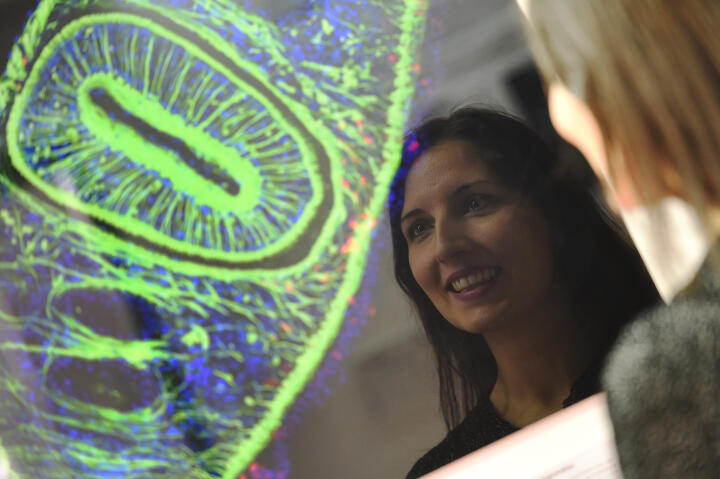Indestructible Flatworms – How an Organism Regenerates After Even Losing Its Head
If a flatworm loses its head, it can regenerate the lost body part, complete with a functioning brain and eyes. How does that work? In simple terms, the flatworm’s regeneration process is similar to the growth process of a human embryo. But even when they are adults, flatworms are still full of stem cells that can differentiate into any cell type needed to replace lost tissue. This raises many questions: How does a stem cell know where to migrate and what to become? How are these internal processes communicated? And, in the end, which genes are responsible for regeneration.
Cell biologist Dr. Kerstin Bartscherer and her Cells-in-Motion team “Stem Cells and Regeneration” explore these questions in the laboratories of the Max Planck Institute for Molecular Biomedicine (MPI). By inducing RNA interference, they can disable certain gene functions to find out if these genes play a leading role in regeneration. A detailed understanding of how flatworms regenerate should eventually help scientists comprehend the limits of human regeneration.
Photos


To study living flatworms, the Cells-in-Motion group works in the laboratories of the Max Planck Institute in Münster.© CiM – Peter Grewer 
The flatworm’s favourite dish is calf’s liver, but it does not have proper table manners: it consumes food with the same pharynx it uses for excretion.© CiM – Peter Grewer 
Doctoral student Florian Seebeck puts flatworms on ice to numb them and slow them down. This makes it easier to inject RNA molecules.© CiM – Peter Grewer 
Fluorescence microscopy allows a view into the flatworm's head. Different mRNA probes cause certain neural cells to glow red or green. The DNA of every cell is labelled with a blue fluorescent dye.© CiM – Peter Grewer 
Although working in the lab requires concentration, the mood here is upbeat. The doctoral students always listen to BBC rock radio in the background.© CiM – Peter Grewer

